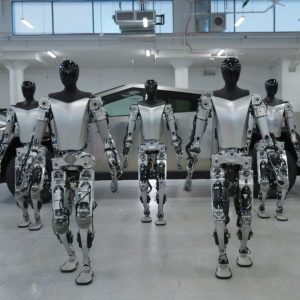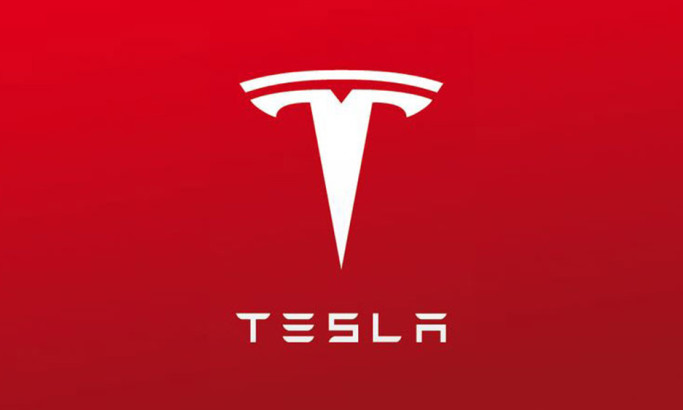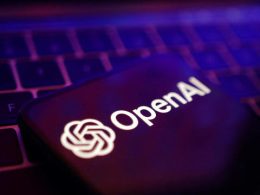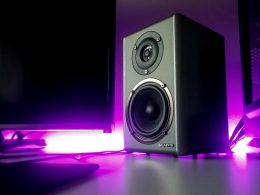Tesla’s Humanoid Robot: A Breakthrough in Artificial Intelligence
Introduction
Hi, I’m Alex, a freelance writer and a tech enthusiast. I have been following the latest developments and innovations in the field of artificial intelligence and robotics for over a decade. I’m fascinated by the potential of these technologies to transform our lives and society for the better.
In this article, I will share with you one of the most exciting and groundbreaking projects in the history of AI and robotics: the Tesla Robot. This is a humanoid robot that has been designed and developed by Tesla, Inc., the electric car company led by visionary entrepreneur Elon Musk. The Tesla Robot, also known as Optimus, is a highly anticipated humanoid robot that has been designed to work alongside humans and perform tasks that are dangerous, menial, or boring. With its advanced artificial intelligence and machine learning capabilities, the Tesla Robot can mimic human-like motions, interact with its environment, and learn from its experiences.
In this article, I will explain what the Tesla Robot is, how it works, what it can do, and why it is a breakthrough in artificial intelligence and robotics. I will also discuss the benefits and challenges of this project, as well as its implications for the future of humanity. By the end of this article, you will have a better understanding of the Tesla Robot and its potential impact on the world.
What is the Tesla Robot?
The Tesla Robot is a humanoid robot that has been designed and developed by Tesla, Inc., the electric car company founded and led by Elon Musk. The Tesla Robot is also known as Optimus, after the leader of the Autobots in the Transformers franchise. The Tesla Robot was first unveiled at the Tesla AI Day event on August 19, 2021, where Musk presented a rendering and some specs about the robot. He also showed a video of the robot performing simple tasks, such as watering plants, carrying boxes, and lifting metal bars. He said that the robot was a work-in-progress but could be on sale to the public in a few years’ time.
The Tesla Robot is based on the same hardware and software that powers Tesla’s electric vehicles and autonomous driving system. The robot uses the same computer chip, cameras, sensors, and neural network that enable Tesla cars to perceive and navigate their surroundings. The robot also uses the same battery technology that powers Tesla cars, giving it a long-lasting and eco-friendly energy source. The robot stands at 5 feet 8 inches tall and weighs 125 pounds. It has a screen on its face that displays useful information and emotions. It has two arms, two legs, and five fingers on each hand. It can walk at a speed of 5 miles per hour and carry a weight of 45 pounds. It can also communicate with humans using natural language and gestures.
The Tesla Robot is designed to work alongside humans and perform tasks that are dangerous, menial, or boring. Musk said that the robot’s purpose is to eliminate the need for humans to do repetitive and tedious jobs, and to create a future of abundance and leisure for humanity. He also said that the robot is intended to be friendly and safe, and that humans can easily outrun and overpower it if necessary. He added that the robot will have a stop button that cannot be tampered with, and that Tesla will ensure that the robot does not go down the “Terminator path”, referring to the movie franchise about killer cyborgs.

How does the Tesla Robot work?
The Tesla Robot works by using the same hardware and software that powers Tesla’s electric vehicles and autonomous driving system. The robot uses a computer chip called the Tesla FSD (Full Self-Driving) chip, which is a custom-designed chip that can process 144 trillion operations per second. The chip enables the robot to run a neural network, which is a type of artificial intelligence that mimics the human brain. The neural network allows the robot to learn from data and experience, and to perform complex tasks that require perception, reasoning, and decision-making.
The robot also uses a set of cameras, sensors, and actuators that enable it to perceive and interact with its environment. The robot has eight cameras that provide a 360-degree view of its surroundings. The cameras feed the visual data to the neural network, which processes the images and recognizes objects, people, and situations. The robot also has a lidar, which is a sensor that uses laser beams to measure distances and create a 3D map of the environment. The lidar helps the robot to avoid obstacles and navigate complex terrains. The robot also has a radar, which is a sensor that uses radio waves to detect the speed and direction of moving objects. The radar helps the robot to track and predict the movements of other vehicles, pedestrians, and animals. The robot also has a microphone, which allows it to listen to sounds and voices, and a speaker, which allows it to produce sounds and speech.
The robot also has a set of actuators that enable it to move and manipulate objects. The robot has two arms, two legs, and five fingers on each hand. The arms and legs have joints that allow the robot to bend and rotate them. The fingers have sensors that allow the robot to feel and grasp objects. The robot can walk, run, jump, and balance using its legs. It can also lift, carry, push, and pull objects using its arms and hands. The robot can also use tools and devices that are designed for human use, such as keyboards, phones, and remote controls.
The robot works by using a combination of software modules that control its different functions and behaviors. The robot has a motion planning module, which is a software that plans and executes the robot’s movements. The motion planning module uses the data from the cameras, lidar, and radar to create a path for the robot to follow, and to generate the commands for the actuators to execute. The motion planning module also uses the neural network to learn from the robot’s actions and outcomes, and to improve its performance over time. The robot also has a navigation module, which is a software that guides the robot to its destination. The navigation module uses the data from the cameras, lidar, and radar to create a map of the environment, and to locate the robot’s position and orientation. The navigation module also uses the neural network to learn from the robot’s travels and experiences, and to optimize its routes and strategies. The robot also has a communication module, which is a software that enables the robot to communicate with humans and other robots. The communication module uses the microphone and speaker to produce and understand natural language and gestures. The communication module also uses the neural network to learn from the robot’s conversations and interactions, and to adapt its style and tone to the context and audience.
What can the Tesla Robot do?
The Tesla Robot can do a variety of tasks that are dangerous, menial, or boring for humans. Musk said that the robot’s purpose is to eliminate the need for humans to do repetitive and tedious jobs, and to create a future of abundance and leisure for humanity. He also said that the robot can perform any task that a human can do, as long as it is physically possible and safe. Some of the tasks that the robot can do are:
- Working in Tesla’s factories and warehouses, where the robot can assemble, inspect, and transport parts and products. The robot can also perform quality control, maintenance, and repair tasks, as well as assist and collaborate with human workers.
- Working in other industries and sectors, such as construction, agriculture, mining, manufacturing, and logistics, where the robot can perform tasks that are hazardous, strenuous, or monotonous for humans. The robot can also perform tasks that require precision, accuracy, and speed, such as welding, drilling, cutting, and sorting.
- Working in service and hospitality, such as retail, food, entertainment, and tourism, where the robot can perform tasks that are customer-facing, interactive, or creative. The robot can also perform tasks that require empathy, patience, and humor, such as greeting, serving, entertaining, and educating customers.
- Working in health and education, such as medicine, nursing, therapy, and teaching, where the robot can perform tasks that are caring, supportive, or instructive. The robot can also perform tasks that require knowledge, skills, and compassion, such as diagnosing, treating, counseling, and mentoring patients and students.
- Working in personal and domestic, such as household, gardening, and pet care, where the robot can perform tasks that are routine, mundane, or time-consuming for humans. The robot can also perform tasks that require flexibility, adaptability, and initiative, such as cleaning, cooking, shopping, and organizing.
Why is the Tesla Robot a breakthrough in artificial intelligence and robotics?
The Tesla Robot is a breakthrough in artificial intelligence and robotics because it is one of the first humanoid robots that can work alongside humans and perform tasks that are dangerous, menial, or boring for humans. The Tesla Robot is also a breakthrough because it is based on the same hardware and software that powers Tesla’s electric vehicles and autonomous driving system, which are considered to be some of the most advanced and innovative technologies in the world. The Tesla Robot is also a breakthrough because it uses a neural network, which is a type of artificial intelligence that mimics the human brain, and that can learn from data and experience, and perform complex tasks that require perception, reasoning, and decision-making.
What are the benefits and challenges of the Tesla Robot?
The Tesla Robot has many benefits and challenges for humanity and society. Some of the benefits are:
- The Tesla Robot can improve the productivity, efficiency, and quality of work in various industries and sectors, by performing tasks that are dangerous, menial, or boring for humans. The robot can also perform tasks that require precision, accuracy, and speed, such as welding, drilling, cutting, and sorting.
- The Tesla Robot can enhance the service and hospitality, health and education, and personal and domestic sectors, by performing tasks that are customer-facing, interactive, or creative. The robot can also perform tasks that require empathy, patience, and humor, such as greeting, serving, entertaining, and educating customers, patients, and students.
- The Tesla Robot can create a future of abundance and leisure for humanity, by eliminating the need for humans to do repetitive and tedious jobs, and by freeing up time and resources for humans to pursue their passions, hobbies, and interests. The robot can also create new opportunities and possibilities for humans to explore, learn, and innovate.
- The Tesla Robot can reduce the environmental impact of human activities, by using the same battery technology that powers Tesla cars, which is a long-lasting and eco-friendly energy source. The robot can also help to conserve and protect natural resources, by performing tasks that involve recycling, cleaning, and restoring the environment.
Some of the challenges are:
- The Tesla Robot can pose ethical, social, and legal issues, such as the potential loss of human jobs, dignity, and identity, due to the automation and replacement of human labor by robots. The robot can also raise questions about the rights, responsibilities, and accountability of robots and their creators, as well as the impact of robots on human values, norms, and culture.
- The Tesla Robot can pose technical, security, and safety issues, such as the possibility of malfunction, hacking, or misuse of the robot, which could cause harm or damage to humans, property, or the environment. The robot can also pose risks of conflict, competition, or confrontation between humans and robots, or between different groups of humans or robots, due to the scarcity, inequality, or diversity of resources, interests, or goals.
- The Tesla Robot can pose existential and philosophical issues, such as the meaning and purpose of human life, intelligence, and consciousness, in the face of the emergence and evolution of artificial life, intelligence, and consciousness. The robot can also pose challenges to the human identity, autonomy, and agency, in relation to the robot’s identity, autonomy, and agency, as well as the influence and control of the robot over humans, or vice versa.
How will the Tesla Robot affect the future of humanity?
The Tesla Robot will affect the future of humanity in profound and unpredictable ways. The robot will not only change the way humans work, live, and interact, but also the way humans think, feel, and behave. The robot will not only create new opportunities and possibilities, but also new challenges and dilemmas. The robot will not only enhance and complement human capabilities, but also challenge and compete with human capabilities. The robot will not only be a tool and a partner for humans, but also a rival and a threat for humans.
The Tesla Robot will affect the future of humanity depending on how humans design, develop, and deploy the robot, as well as how humans regulate, monitor, and evaluate the robot. The robot will also affect the future of humanity depending on how humans interact, cooperate, and coexist with the robot, as well as how humans educate, train, and learn from the robot. The robot will also affect the future of humanity depending on how humans adapt, respond, and cope with the robot, as well as how humans embrace, accept, and trust the robot.
The Tesla Robot will affect the future of humanity in positive and negative ways. The robot can bring benefits and opportunities, such as improving the quality of life, advancing the knowledge and innovation, and creating a future of abundance and leisure for humanity. The robot can also bring challenges and risks, such as disrupting the social and economic order, threatening the human values and culture, and creating a future of uncertainty and conflict for humanity.
The Tesla Robot will affect the future of humanity in different and diverse ways. The robot can have different impacts and implications for different groups of people, such as workers, consumers, students, patients, and citizens. The robot can also have different effects and outcomes for different domains and sectors, such as industry, service, health, education, and personal. The robot can also have different influences and consequences for different aspects and dimensions of human life, such as physical, mental, emotional, and spiritual.
Conclusion
The Tesla Robot is a humanoid robot that has been designed and developed by Tesla, Inc., the electric car company led by Elon Musk. The Tesla Robot is based on the same hardware and software that powers Tesla’s electric vehicles and autonomous driving system. The Tesla Robot is designed to work alongside humans and perform tasks that are dangerous, menial, or boring for humans. The Tesla Robot is a breakthrough in artificial intelligence and robotics, as it is one of the first humanoid robots that can work alongside humans and perform tasks that are dangerous, menial, or boring for humans. The Tesla Robot has many benefits and challenges for humanity and society, as it can improve the productivity, efficiency, and quality of work, enhance the service and hospitality, health and education, and personal and domestic sectors, create a future of abundance and leisure, reduce the environmental impact, pose ethical, social, and legal issues, pose technical, security, and safety issues, pose existential and philosophical issues, and affect the future of humanity in profound and unpredictable ways.










